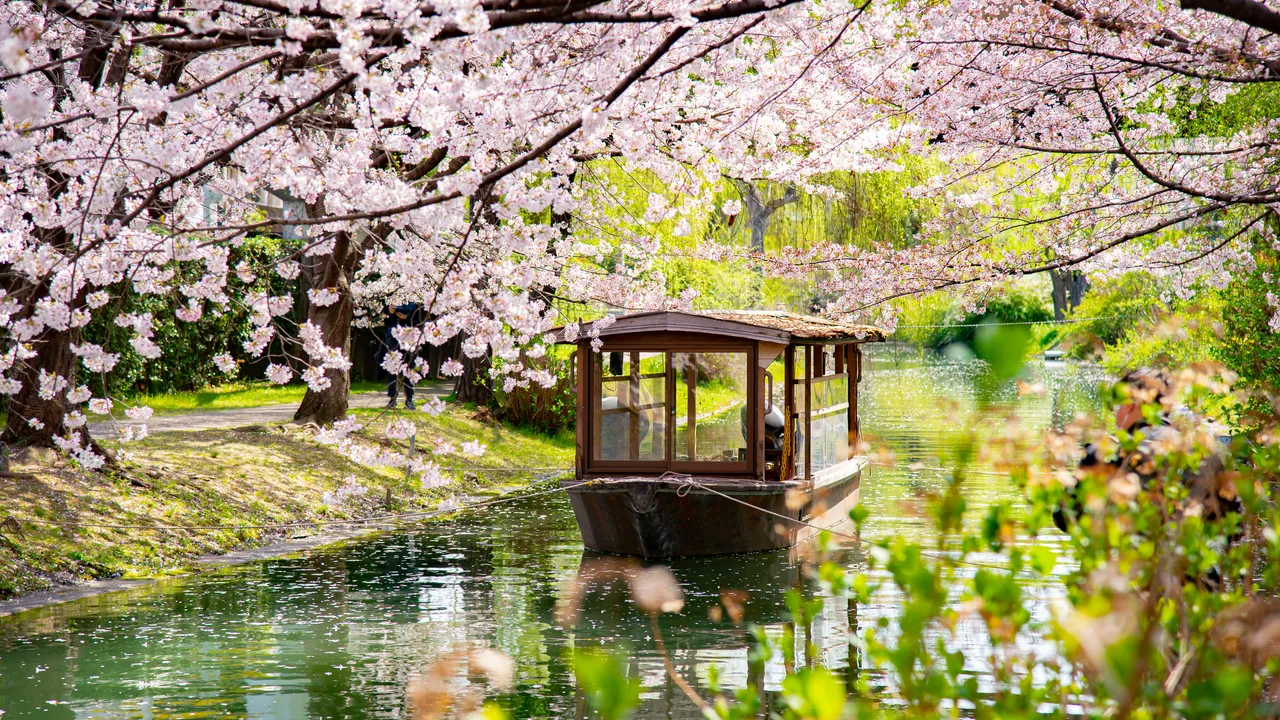Japan, a nation where ancient traditions harmonize with cutting-edge modernity, offers an unrivaled travel experience that weaves together vibrant urban centers, restorative hot springs, and breathtaking mountain landscapes. In 2025, Japan continues to enchant with its blend of cultural heritage and natural splendor, making it the perfect destination for a journey that balances excitement, relaxation, and awe. This 10-day itinerary curates the ultimate Japan experience, spotlighting the bustling cultural hub of Kyoto, the geothermal paradise of Beppu, and the majestic mountains surrounding Takayama. From temple-hopping in Kyoto to soaking in Beppu’s onsens and hiking in the Japanese Alps, this guide provides a meticulously planned adventure across Honshu and Kyushu, complete with practical tips and a map description to ensure a seamless and unforgettable trip.
Why This Itinerary?
This 10-day itinerary is crafted for travelers seeking a deeper exploration of Japan’s diverse facets: Kyoto’s historic temples and vibrant streets embody urban sophistication, Beppu’s steaming hot springs offer unparalleled relaxation, and Takayama’s Alpine setting delivers majestic mountain vistas. Covering approximately 2,000 km across Honshu and Kyushu, the route leverages Japan’s efficient Shinkansen (bullet train) network and regional flights for seamless travel. Unlike shorter trips, this 10-day plan allows for immersive cultural experiences, such as Kyoto’s tea ceremonies, Beppu’s geothermal “hells,” and Takayama’s historic villages like Shirakawa-go. Spring (March–April) and autumn (October–November) are ideal for mild weather (50–75°F) and seasonal beauty, though the itinerary suits year-round travel with adjustments for winter snow or summer heat.
Getting to Japan
Most travelers arrive at Tokyo’s Narita (NRT) or Haneda (HND) airports, with flights from North America (~$800–$1,500 round trip, 11–14 hours), Europe (~£650–£1,500, 12–15 hours), or Asia ($100–$300 via budget airlines like Peach). For this itinerary, fly into Osaka’s Kansai International Airport (KIX) for proximity to Kyoto (75 km). From KIX, take the Haruka Express to Kyoto (75 minutes, $25). The Japan Rail (JR) Pass ($450 for 14 days) covers Shinkansen and most trains, ideal for Kyoto to Takayama and back. A domestic flight from Osaka to Oita (for Beppu, $80–$150, 1 hour) is recommended to save time. Renting a car ($50–$80/day) is useful for rural Takayama but unnecessary elsewhere. Pack light layers, comfortable shoes, a reusable water bottle, and a small towel for onsens (tattoos may need covering).
Map of the Itinerary
The itinerary forms a 2,000-km loop starting in Kyoto (Kansai region), moving 500 km north to Takayama (Gifu Prefecture), then 900 km southwest to Beppu (Oita Prefecture, Kyushu), and returning to Kyoto via Osaka. Kyoto’s key sites (Kinkaku-ji, Fushimi Inari) are within 10 km, Takayama’s attractions (Hida Folk Village, Shirakawa-go) span 5–50 km, and Beppu’s onsens and hells are 5–15 km apart. Use Hyperdia or Google Maps for train schedules, and purchase a Suica/Pasmo card ($10–$20) for local buses and trains. The Kansai-Hiroshima Area Pass ($120 for 5 days) is an alternative for Kyoto-Beppu legs if not using a full JR Pass.
Day-by-Day Itinerary
Days 1–2: Kyoto – Cultural Capital
- Day 1: Arrive at Kansai Airport and transfer to Kyoto. Check into a ryokan like Tawaraya ($300–$600/night) or a budget hotel like Piece Hostel Kyoto ($40–$80). Visit Kinkaku-ji, the Golden Pavilion ($4), and stroll the Philosopher’s Path (free). Dine at Giro Giro Hitoshina for kaiseki ($80–$120, book ahead).
- Day 2: Explore Fushimi Inari Taisha’s red torii gates (free, early to avoid crowds). Join a tea ceremony at En Tea House ($30). Lunch at Kyoto Ramen Koji for shoyu ramen ($8–$12). Visit Kiyomizu-dera Temple ($4) and Gion for geisha sightings. Evening at Pontocho Alley for yakitori ($10–$20). Overnight in Kyoto.
Days 3–4: Kyoto – Temples and Arashiyama
- Day 3: Visit Ryoan-ji’s Zen rock garden ($5) and Nijo Castle ($6). Lunch at Nishiki Market for sushi and kushikatsu ($5–$15). Explore Arashiyama Bamboo Grove (free) and Tenryu-ji Temple ($5). Evening at a sake bar like Sake Bar Yoramu ($10–$20).
- Day 4: Day trip to Nara (45 minutes, $7, JR Pass valid) for Todai-ji Temple’s Great Buddha ($6) and Nara Park’s deer ($2 for crackers). Return to Kyoto for dinner at Ippudo for tonkotsu ramen ($10–$15). Overnight in Kyoto.
Day 5: Takayama – Gateway to the Alps
- Morning: Take the Shinkansen and JR Hida Limited Express from Kyoto to Takayama (4 hours, $70, JR Pass valid). Check into Oyado Koto No Yume ryokan ($150–$300) or Hoshokaku ($80–$150). Visit Takayama Jinya, a historic government house ($4).
- Afternoon: Lunch at Maruaki for Hida beef sushi ($15–$25). Explore Sanmachi Suji’s Edo-period streets, sampling sake at Harada Brewery ($5 tasting). Visit the Takayama Festival Floats Museum ($8).
- Evening: Dine at Suzuya for Hida beef steak ($20–$40). Relax in your ryokan’s onsen, enjoying mountain views. Overnight in Takayama.
Day 6: Takayama – Shirakawa-go and Alps
- Morning: Take a bus to Shirakawa-go (50 minutes, $15 round trip), a UNESCO-listed village with gassho-zukuri farmhouses. Visit the Gassho-zukuri Minkaen Open-Air Museum ($6) and Wada House ($3).
- Afternoon: Lunch at a local café for gohei mochi (grilled rice cakes, $3–$5). Hike the Ogimachi Castle Observation Deck trail (30 minutes, free) for panoramic Alpine views. Return to Takayama.
- Evening: Dine at Heianraku for shabu-shabu ($15–$30). Visit a local izakaya like Jibiru for craft beer ($5–$10). Overnight in Takayama.
Day 7: Beppu – Hot Spring Paradise
- Morning: Travel from Takayama to Osaka via Shinkansen (4 hours, $80, JR Pass valid), then fly to Oita Airport (1 hour, $80–$150). Transfer to Beppu (40 minutes, $5 bus). Check into Suginoi Hotel ($150–$300) with panoramic onsens.
- Afternoon: Visit the Hells of Beppu, seven geothermal springs ($4 for all). Start with Umi Jigoku (Sea Hell) and Chinoike Jigoku (Blood Pond Hell). Lunch at Jigoku Mushi Kobo for steam-cooked seafood ($10–$20).
- Evening: Soak in Suginoi’s infinity onsen, overlooking Beppu Bay. Dine at the hotel’s kaiseki buffet ($30–$50). Overnight in Beppu.
Day 8: Beppu – Onsens and Coastal Charm
- Morning: Visit Takegawara Onsen for a historic sand bath ($10, book ahead). Explore Kannawa’s steaming streets and try onsen tamago (eggs boiled in hot springs, $2).
- Afternoon: Lunch at Toyotsune for fugu (blowfish, $20–$40, certified chefs). Take a 20-minute bus to Myoban Yunosato for mud baths ($8). Visit the Beppu Art Museum ($5) for local crafts.
- Evening: Dine at Somuri for yakitori and Oita sake ($15–$25). Relax in a private onsen at your hotel. Overnight in Beppu.
Day 9: Osaka – Foodie Metropolis
- Morning: Fly from Oita to Osaka (1 hour, $80–$150). Check into Cross Hotel Osaka ($100–$200). Explore Dotonbori, sampling takoyaki ($5–$8) and okonomiyaki ($8–$12).
- Afternoon: Visit Osaka Castle ($5) and Umeda Sky Building’s Floating Garden ($12). Lunch at Endo Sushi for nigiri ($10–$20). Shop in Shinsaibashi.
- Evening: Dine at Mizuno for Michelin-starred okonomiyaki ($15–$25). Explore Shinsekai and Tsutenkaku Tower ($8). Overnight in Osaka.
Day 10: Osaka and Departure
- Morning: Visit Sumiyoshi Taisha’s arched bridge (free). Explore Kuromon Market for kushikatsu ($5–$10) and sea urchin ($10–$15).
- Afternoon: Take a 30-minute train to Kyoto (JR Pass valid) for last-minute souvenirs at Nishiki Market. Lunch at Katsukura for tonkatsu ($10–$20). Transfer to Kansai Airport (75 minutes, $25).
- Evening: Depart from Kansai Airport or extend your stay in Osaka, dining at Kani Doraku for crab kaiseki ($30–$50).
Practical Tips for Your Japan Adventure
- Best Time to Visit: Spring (March–April) for cherry blossoms, autumn (October–November) for fall foliage (50–75°F). Summer (June–August) is hot (80–95°F); winter (December–February) offers snow in Takayama but mild Beppu weather (40–60°F).
- Budgeting: Expect $150–$300/day for accommodation, meals, transport, and activities. Budget hotels ($40–$80), street food ($5–$15), and JR Pass ($450) save costs. Domestic flight to Beppu: $80–$150. Total trip: ~$1,500–$3,000 excluding international flights.
- Transport: JR Pass covers Shinkansen and JR trains; book seats via JR counters. Buses in Beppu/Takayama cost $2–$15. Taxis ($10–$20) are convenient but pricey. Use Navitime for schedules.
- Accommodation: Book ryokans 3–6 months ahead, especially in Beppu. Hostels in Kyoto/Osaka suit budget travelers. Expect shared onsen facilities in ryokans.
- Etiquette: Bow to greet, remove shoes in homes/ryokans, and cover tattoos at onsens (use adhesive patches if needed). Tipping is not customary. Say “arigatou gozaimasu” (thank you) and “sumimasen” (excuse me).
- Sustainability: Support artisans (e.g., Takayama’s woodcraft, $10–$50). Use reusable chopsticks and avoid plastic waste. Respect temple etiquette by not touching sacred objects.
- Safety: Japan is very safe; keep passports secure in crowded areas like Dotonbori. English signage is common, but Google Translate aids with menus.
- Connectivity: Rent a pocket Wi-Fi ($10/day) for navigation. Most hotels and cafés offer free Wi-Fi. Beppu’s rural areas may have limited signals.
Why This Journey?
This 10-day itinerary captures Japan’s essence: Kyoto’s temple-laden streets pulse with cultural vibrancy, Beppu’s steaming onsens offer geothermal serenity, and Takayama’s Alpine villages and Shirakawa-go evoke timeless majesty. Unlike shorter trips, this plan allows for deep dives into tea ceremonies, sand baths, and mountain hikes, creating a holistic experience. From slurping ramen in Osaka to meditating at Ryoan-ji, each day balances urban excitement with natural tranquility. Japan’s seamless infrastructure and warm hospitality ensure a journey that’s as effortless as it is profound. Plan your 2025 adventure to discover why Japan’s cities, hot springs, and mountains redefine travel.




Leave a Reply